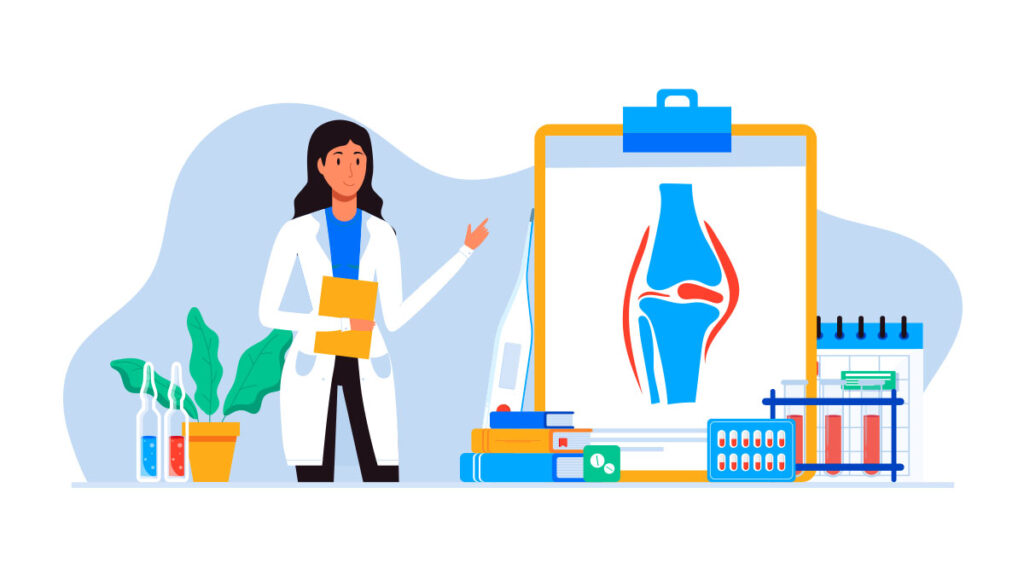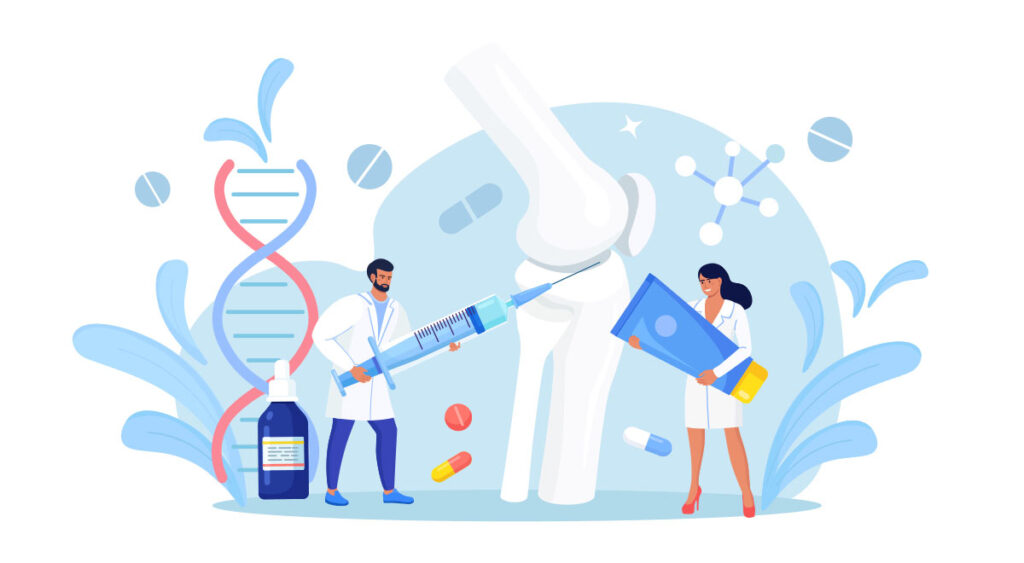The knee is the largest joint in the body, responsible for allowing us to stand and bearing our weight continuously. Knees are highly susceptible to wear and tear, and pain in knees is very common as a result – particularly as we age. Irritation to the tissue surrounding the kneecap is usually responsible, and while keeping fit and active is key to our health and longevity, it is usually active individuals who put repetitive stress on their knees and are therefore at a higher risk of injury and pain in knees. Here is a closer look at a number of potential knee pain causes.
Brief Anatomy of the Knee
The kneecap, also known as the patella, is a thick, round bone that covers the front part of the knee joint.
There are two types of cartilage in the knee.

Articular Cartilage: This covers the end of the thighbone, the shinbone and the back of the kneecap. It is a slippery substance that helps the knee bones glide smoothly when the leg bends or straightens.
Meniscal Cartilage: This consists of two wedge-shaped pieces of cartilage on the inner and outer side of the knee that act as shock absorbers between the thighbone and shinbone. This cartilage is most typically responsible for pain in knees when individuals have torn their meniscus.
Knee Pain Causes
Injuries and Overuse
Strains or Sprains: Minor injuries to the knee ligaments and/or muscles are extremely common knee pain causes and are typically the result of a blow to the knee or sudden twisting. Symptoms may include pain, swelling and difficulty walking.

Torn or Injured Ligaments/Tendons: Tendon injuries can range from inflammation to a tear, typically from sports or a fall. Injury to the ACL (anterior cruciate ligament) is usually caused by a sudden twisting motion; injury to the PCL (posterior cruciate ligament) is typically the result of a direct blow, and damage to the MCL (medial collateral ligament) is often caused by pressure to the outside of the knee. All three may cause swelling and sharp knee pain, bleeding into the knee, or an unstable knee.
Cartilage Issues: Cartilage in the kneecap may soften from injury, overuse, misalignment of the knee or muscle weakness. A meniscus tear refers to torn cartilage resulting in pain in knees felt inside or outside the knee joint. Cartilage tears are one of the more common knee pain causes and often occur with sprains.
Bursitis: Inflammation can result from repeated pressure on the knee, causing swollenness, tenderness, warmth and pain in knees.
Tendinitis: Overuse during certain activities or a change in activity may result in inflammation of the tendons. When this occurs in the patellar tendon – one of the more common knee pain causes in sports as a result of hitting the ground after a jump – it is referred to as “jumper’s knee”.
Iliotibial Band Syndrome: This involves injury to the thick band that runs from the hip to the outside of the knee. It may result in a clicking or rubbing feeling on the side of the knee, pain that increases with activity, and pain that spreads to the hip.
Patellofemoral Syndrome: This is one of the more frequent knee pain causes affecting children and young adults, involving pain behind or around the kneecap, particularly when flexing the knees.
Dislocation of the Kneecap: When the kneecap is dislocated as a result of direct trauma, it may slip sideways to the outside of the knee. It could appear deformed, the knee may stay bent and unable to straighten, there is likely to be sharp knee pain, tenderness and swelling, and the result may be a “sloppy” kneecap, where the kneecap can move too far to the left and right.
Broken Kneecap: The patella may fracture or break as a result of a fall or a direct blow to the knee, resulting in bruising, sharp knee pain, severe swelling and limited mobility.
Medical Conditions
Arthritis: Osteoarthritis is a common form of arthritis that can affect the knees. This degenerative condition results in cartilage wearing down over time, which may cause pain and stiffness in one or both knees. Pain may feel worse at the end of the day or during movement, or may improve with rest. Rheumatoid arthritis causes inflammation in the joints that can destroy knee cartilage over time, resulting in swelling, pain and limited mobility.
Baker Cyst: This refers to a swelling behind the knee that is filled with fluid, and may be the result of other knee pain causes, such as arthritis.
Osgood-Schlatter Disease: This condition may affect children and younger individuals, causing a bony lump to form below the knee cap which becomes painful and swollen with exercise.
Chondromalacia: Also referred to as “runner’s knee”, this is one of the more degenerative knee pain causes that results from chronic wear on the kneecap or a traumatic injury. Chondromalacia causes articular cartilage to soften and fray over time. Pain in knees may be felt at the front of the knee, especially when walking up and downhill, and grinding or clicking may be experienced when the knee flexes or extends.
Cancer: Far less likely than other knee pain causes, cancers that either spread to or begin in the bones may induce pain in knees. Individuals usually respond well to treatments such as pain medicine, ice, rest and therapeutic exercises. However, surgery may be required when the knee has structural damage, or if it has not responded to other methods of pain relief.

